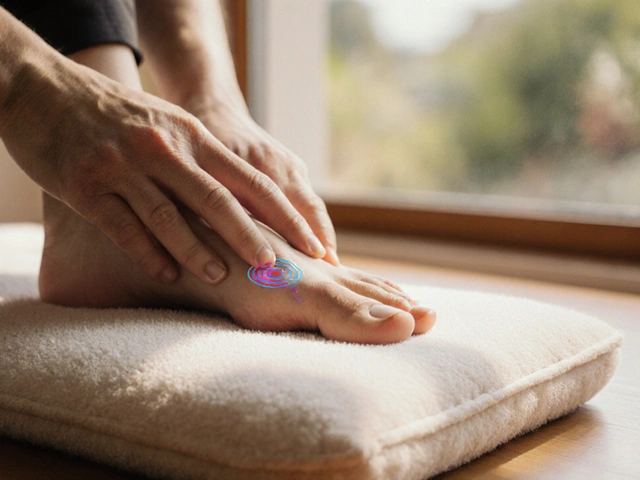Increased flexibility for dogs: easy steps to better mobility
Stiffness slows dogs down and makes life harder for both of you. Increased flexibility helps your dog move with less pain, jump and play more easily, and recover faster after exercise. This page gives short, practical steps you can use at home - no special gear needed.
Start with a warm-up. A 5-10 minute gentle walk gets blood flowing and makes tissues more pliable. Avoid forcing stretches on a cold dog. After the walk, use hands-on massage to relax tight muscles: long, slow strokes along the back and thighs, gentle kneading on large muscle groups, and light circular work around joint areas. Keep each stroke calm and watch your dog's response.
Simple stretches and movements
Focus on gentle, controlled moves. For a rear leg stretch, let your dog stand and encourage it to step forward with the opposite leg while you softly lift and extend the target leg backward - hold only if your dog stays relaxed. Try a forelimb reach by having your dog place paws on a low step and lean forward; this opens shoulders without strain. Do 1-3 reps per side and stop if your dog pulls away or shows discomfort.
Active play builds flexibility too. Short sessions of gentle tugging, low jumps over a bar set at ground level, and controlled fetch with slow returns teach range of motion while keeping strength. Rotate activities so the same muscles aren't overloaded every day.
Routine, recovery, and support
Consistency beats intensity. Aim for short sessions 3-5 times a week rather than long once-a-week pushes. After any session, offer a cool-down walk and a calm massage for a few minutes. Nutrition and recovery matter: omega-3 fats support joint health, and proper rest helps tissues repair. If your dog is older or has arthritis, keep efforts gentle and frequent.
Watch for progress and red flags. You'll notice smoother strides, easier rising, and more willingness to climb stairs. Stop and consult a vet if you see limping, swelling, sudden behavior changes, or if pain increases after gentle work. A vet or canine physiotherapist can assess joint issues, recommend targeted exercises, or guide therapies like myofascial release, neuromuscular massage, or sports massage tailored to your dog.
Try a four-week plan: Week 1 focus on daily warm-up walks and two short massage sessions; Week 2 add the gentle stretches twice a week; Week 3 introduce low-impact play and one extra massage; Week 4 combine all steps and test progress on a walk. Use a warm compress for three minutes before deep work and ice after intense sessions to reduce swelling. Keep notes on what helps so you can repeat what works.
Small habits add up. Five focused minutes of massage and two gentle stretches after daily walks can make a clear difference in weeks. Use treats to reward calm participation, keep sessions positive, and adjust as your dog improves. With steady, gentle work you'll see better flexibility, less stiffness, and a happier dog that moves with more ease.

10 Surprising Benefits of Feldenkrais Training
Hi there! I just discovered something amazing that I must share with you - the surprising benefits of Feldenkrais training. This training, often overlooked, is actually a treasure trove of health benefits. It can dramatically improve our posture, increase our flexibility, and even helps with stress management. Plus, it's such an enjoyable practice. This post will explore ten surprising benefits of incorporating Feldenkrais training into our lifestyle.

Calmness: Your Hidden Secret to Stress Relief
Feb, 12 2025

Stress Reduction: Transform Your Life Today
Dec, 5 2023


